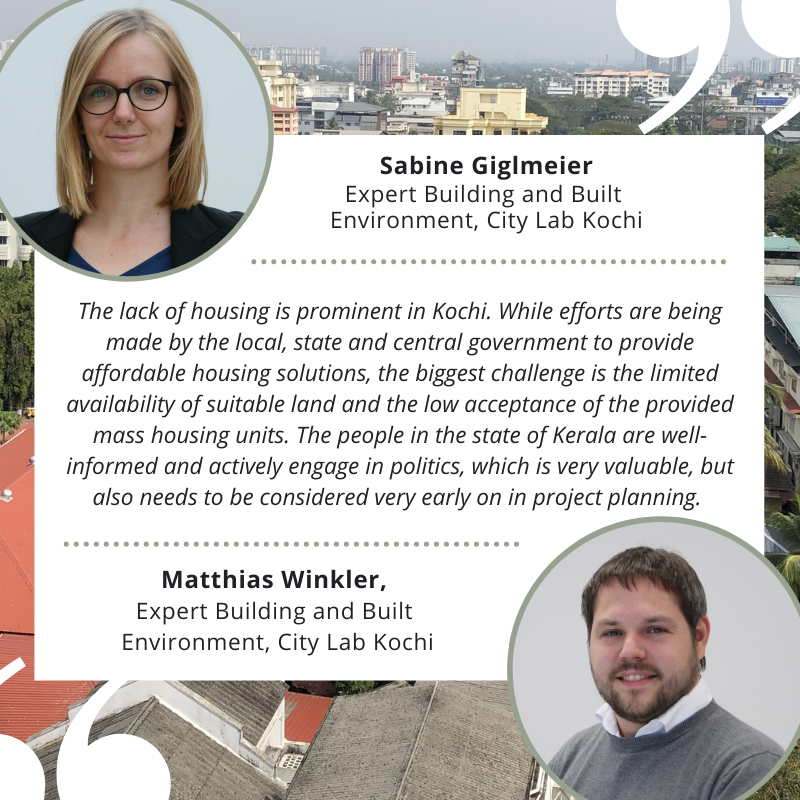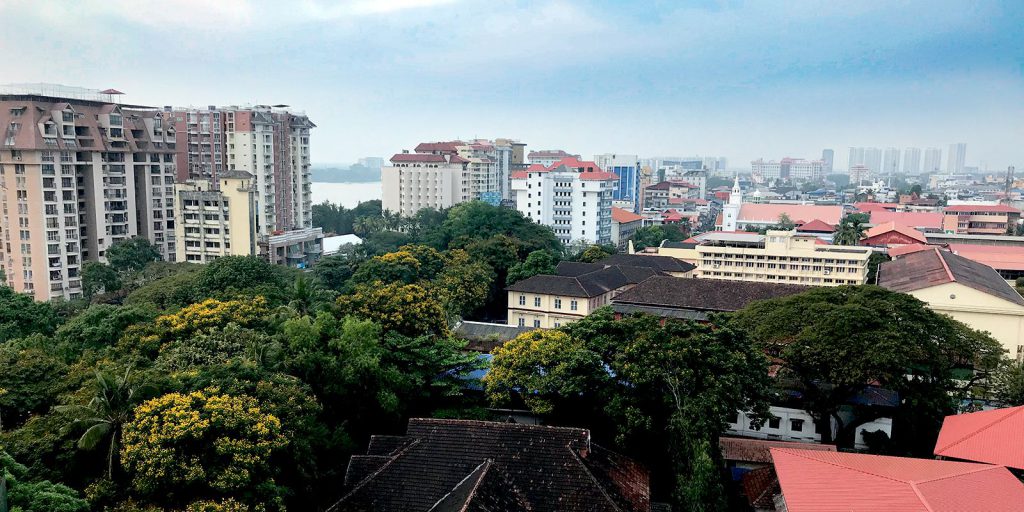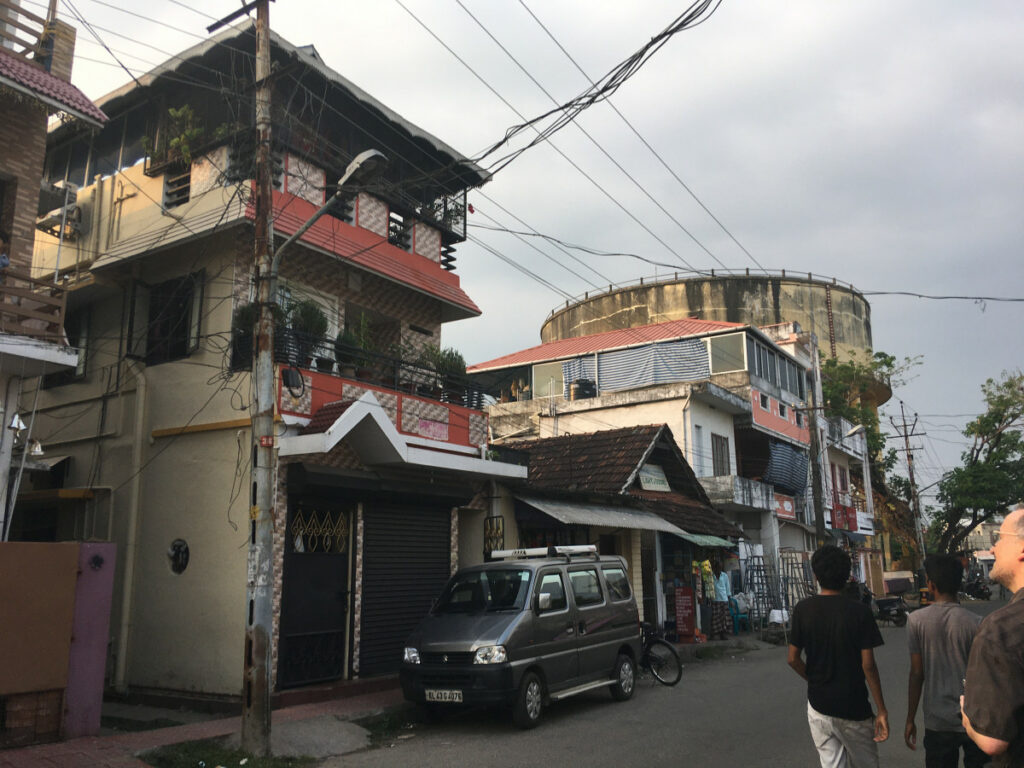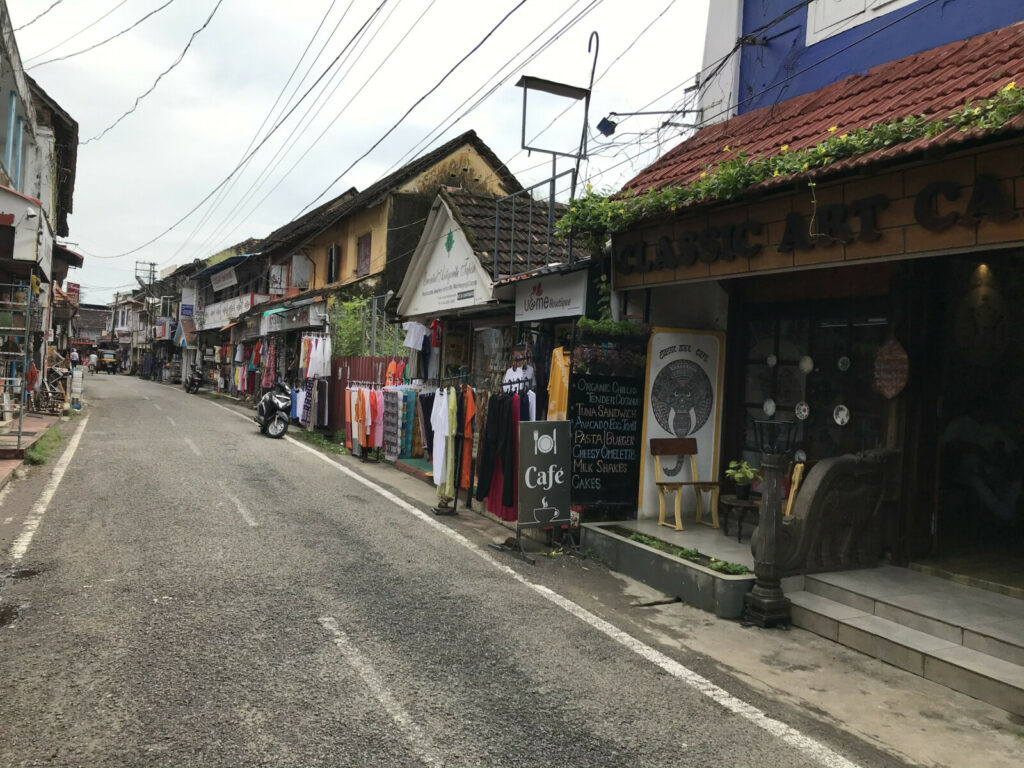Interview with the Building Experts of the City Lab Kochi
Sabine Giglmeier, Business Development Manager, Fraunhofer Institute for Building Physics IBP, Holzkirchen
Matthias Winkler, Researcher, Fraunhofer Institute for Building Physics IBP, Holzkirchen

A fast-paced urbanization in combination with limited availability of suitable building land, has led to a housing shortage in Kochi. In addition, most of the city structure is built in low line areas or close to the coast. The city’s coastline of 48 kilometers and its location only 5 meters above sea level makes it extremely vulnerable to even minimal rises in sea level with a high risk of erosion and flooding.
The first target of SDG 11 “Sustainable Cities and Communities” is to ensure access to adequate, safe and affordable housing by 2030. Climate adaption in the building sector is necessary to reduce vulnerability towards risks like floods and landslides and can significantly contribute to improving urban climate. Low-carbon and climate-resilient housing is key for sustainable urban development as well as promoting livability for the citizens. Consequently, the sector of housing and built environment is one of the three selected focus sectors of the City Lab Kochi. To learn more about the local specificities in the sector we asked our experts some questions.
Q.: Please elaborate on the method for identifying the sector buildings and on the reasons for this particular sector in Kochi.
The sectors on which the MGI-team focuses were selected together with stakeholders from the city. As Kochi is the economic, touristic and commercial center of the state of Kerala, it presents a high degree on urban growth and housing shortage is becoming a big issue there. Upon our visit to the city in January 2020, we decided to extend our focus from housing to the entire built environment as some urban climate issues, e.g. urban heat islands effects, are increasing.

Q.: Which are the most important factors playing into buildings and built environment in Kochi? What are special challenges and opportunities in the city when it comes to buildings?
The lack of housing is prominent in Kochi. While efforts are being made by the local, state and central government to provide affordable housing solutions, the biggest challenge is the limited availability of suitable land and the low acceptance of the provided mass housing units. Many people life very close to the cost, sometimes illegally.
In addition, high density of built-up areas leave little space for greenery. However, green areas are essential for the regulation of urban climate and to mitigate extreme surface runoff after rainfall. As the effects of the urban heat islands increase noticeably, first measures are being taken to make the city greener.
Furthermore, the people in the state of Kerala are well-informed and actively engage in politics. This circumstance is very valuable, but also needs to be considered very early on in project planning in order to secure citizen acceptance for successful implementation.
Q.: Which strategies and tools are/will be used to find innovative solutions related to buildings and built environment for improving the city’s sustainability profile and resilience towards climate risks?
The comprehensive indicator, action field and impact factor analysis has suggested that tackling the urban challenges calls for interventions aimed at building the local capacity in addition to providing technological solutions. Cross-departmental cooperation culture, awareness on sustainability and environment, as well as dialogue on sustainable financing options should not be overlooked.
To help Kochi address its challenges and institutional gaps in the focus sectors, City Lab Kochi has defined 15 project ideas in cooperation with the local partners.


Q.: Are there tangible examples for solutions or projects in the sector buildings and built environment, yet?
he process of analyzing the city has been completed and the results were published in the city profile report (Executive Summary available here). We have also already developed various project ideas and discussed them with local stakeholders. The project proposals with the best cost-benefit ratio were selected according to valid criteria for a more detailed elaboration. Currently, we are in the planning phase for the lighthouse project “Sustainable Neighborhood” combining the sectors energy, water and housing, in which a district with 100-200 houses will be redeveloped. The vision is to have a climate neutral neighborhood with decentralized wastewater management, more green areas and other measures for better stormwater and climate management inside the buildings as well as in surrounding areas.

